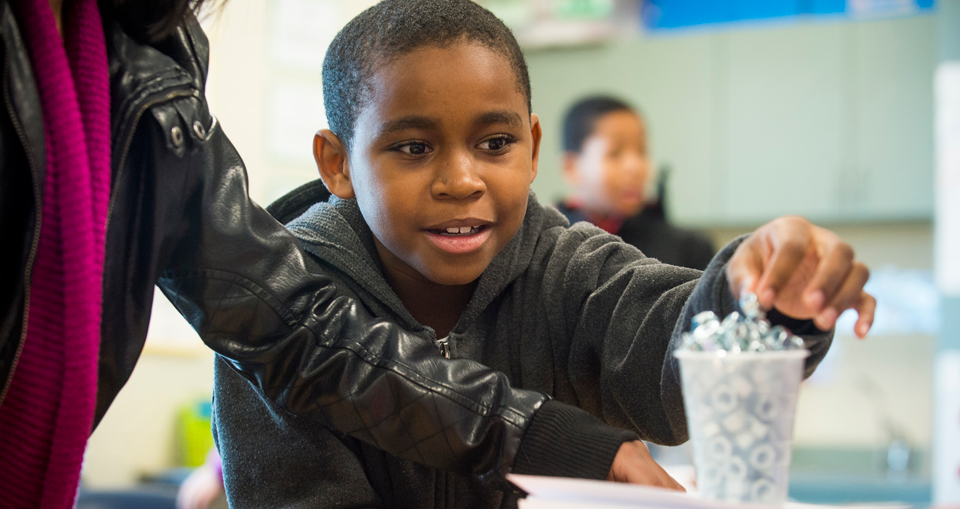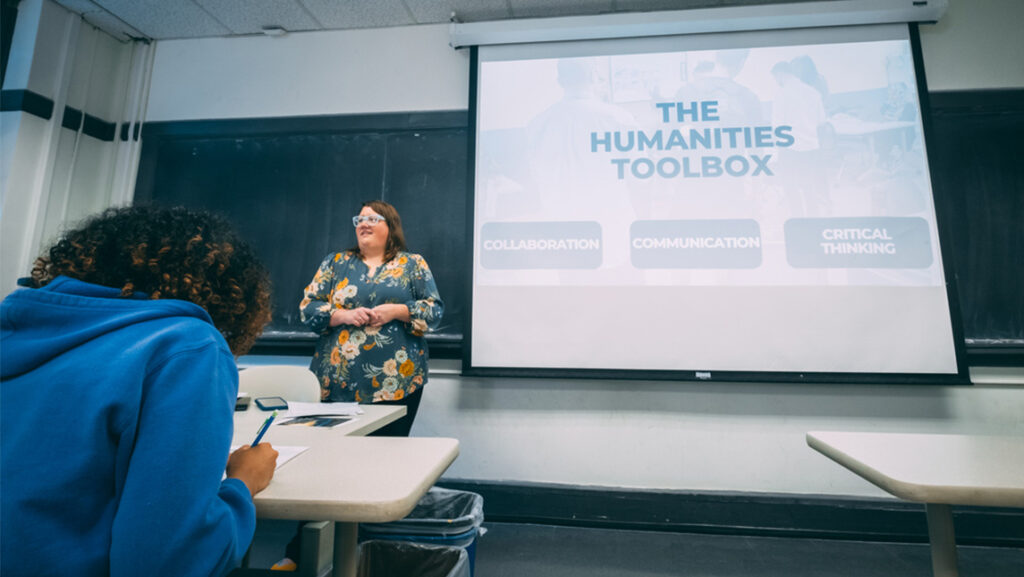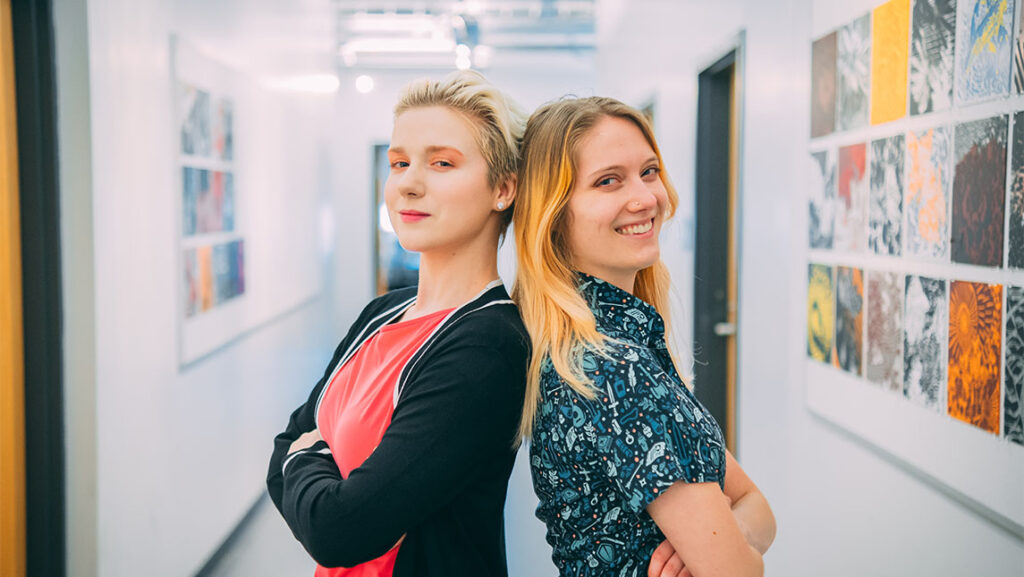Aaliyah is a bright, confident, outspoken 4th grader who consistently displays a passion for science. Her teacher, Ms. Wolfe, values her intensity and emotional engagement. Aaliyah stretches her hand higher and higher so that Ms. Wolfe can spot her. When she is chosen to answer a question, she elaborates on scientific principles and offers little lectures to the class. Aaliyah claims space by trying to control materials, but she’s also glad to share when asked. She stands up for class underdog, Camilo. She knows how to deal with his restless behavior and engage him in classroom science activities. In the 4th grade, Aaliyah is a ‘sciencey’ kid.
“Her identity was consistently not only a valued part of the community, but it was also leverage for her and her community to become more scientific,” recalls Dr. Heidi Carlone, a professor of teacher education and higher education at UNCG.
Things change in 6th grade. Aaliyah’s new science teacher Mr. Campbell values different identity performances than Ms. Wolfe. His “ideal participant” works precisely, always listens, and thinks the teacher is funny and admirable. The new classroom requires bookwork, memorizing facts, and filling out worksheets. Though Aaliyah can meet Mr. Campbell’s demands, this isn’t what nurtured her love for science. Without room to be creative and explore, the little girl who once enjoyed science feels alienated. In the 6th grade, Aaliyah is not a ‘sciencey’ kid.
“Some of the really ‘sciencey’ kids – their identities take huge hits when the [classroom] pedagogy isn’t good,” explains Carlone. She has been studying how a student develops a strong science identity, particularly in the context of classroom expectations. “What do students have to do to be considered competent in this setting?”
 “In classes where you have teachers doing outstanding things that are reform-based and represent best practices, you’ll see students really affiliating with science by the end of the year, which is super exciting,” Carlone asserts. “But the flip side is that when the instruction is not so good, you’ll see students’ science identities waning.” Kids might understand and enjoy science, technology, engineering, and mathematics (STEM) content, but because of classroom expectations that promote science as a narrow and rigid body of knowledge, they may not see it as valuable for their lives or see themselves as fit for work in these fields.
“In classes where you have teachers doing outstanding things that are reform-based and represent best practices, you’ll see students really affiliating with science by the end of the year, which is super exciting,” Carlone asserts. “But the flip side is that when the instruction is not so good, you’ll see students’ science identities waning.” Kids might understand and enjoy science, technology, engineering, and mathematics (STEM) content, but because of classroom expectations that promote science as a narrow and rigid body of knowledge, they may not see it as valuable for their lives or see themselves as fit for work in these fields.
From 2007 to 2009, Carlone studied the culture of “excellent” 4th and 5th grade science classrooms. She then followed a select group of students from those classes for two to three more years. Throughout the study, her team interviewed kids and their teachers about classroom practices.
A major finding dealt with participation structures and sharing. Students in some classrooms raced to provide a single ‘correct’ answer to the teacher. But the classrooms that promoted teamwork and encouraged students to explore multiple answers fostered stronger science identities. Carlone also noted that every learning setting has an “ideal participant,” but good science students may not look like this paragon. A high performing student could be considered ‘sciencey’ even if they had little enthusiasm for the subject. Meanwhile, a poorly-behaved student with genuine interest and talent in science could be overlooked by teachers and peers.
These findings drove Carlone to conceptualize an improved STEM learning environment. “If I were going to design the most equitable elementary science class, what would it look like?” she wondered. Could really good curricula and teaching disrupt narrow, status quo definitions of science and smartness?

In sharing her vision with colleagues, Carlone was surprised to find an almost perfect alignment with a curriculum created at the Museum of Science, Boston, called Engineering is Elementary (EiE).
Carlone’s design principles centered on capturing youth’s wide-ranging interests and multi-faceted social identities. EiE humanizes engineering through the use of a storybook, depicting youth of multiple social, economic, and cultural backgrounds.
Carlone’s vision focused on ensuring a variety of social identities will feel aligned with what it means to be scientific. EiE creates learning environments where all students feel free to share their ideas, and all ideas have value.
Carlone emphasized science as a tool for altruism, social justice, and/or conservation. EiE exhibits how engineers can help people, animals, and society. You get the idea.
With support from EiE founder Dr. Christine Cunningham, Carlone decided to investigate EiE as a tool for promoting equitable STEM learning environments in four Title I elementary schools in North Carolina. She found that, when taught well, EiE expanded STEM-related identity well beyond the classroom elite.
As expected, classroom hierarchies were prevalent and easily perceived by students. “Everybody knows who the smart kids are. It’s visible,” Carlone explains. When participants were asked to name the “smartest students” in the class, 82% of the peers identified performed at or above grade level in mathematics and literacy.
But classroom hierarchies began to dissolve in the engineering unit. Students identified as “smart engineers” came from all academic levels. Franco, a student labeled as exceptionally challenged and an English language learner, performed below grade level in math and literacy. After EiE, 63% of Franco’s classmates identified him as one of the smartest engineers in their class. 81% of all students identified themselves and/or were identified by others as one of the three smartest engineers in the class.
“You’re getting a more equitable classroom that disrupts power hierarchies that prevent kids who may not be smart in traditional academic areas from affiliating with STEM-related activity,” explains Carlone.
By separating science-related identity from classic definitions of smartness, EiE can bring more students to STEM.
But EiE also depends on excellent teachers. Carlone plans to address the teaching side of the equation in her next round of research. This summer, she worked with 18 local teachers and 15 elementary education students from UNCG on integrating engineering practices and habits of mind into the elementary curriculum. The 33 participants will implement EiE in the new school year, demonstrating how teacher training can amplify the next gen STEM curriculum’s results.
To learn more about Carlone’s research, check out:
- Carlone, H.B., Webb, A., Archer, L., & Taylor, M. (2015). What kind of boy does science? A critical perspective on the science trajectories of four scientifically talented boys. Science Education, 99(3), 438-464.
- Carlone, H.B., Johnson, A.C., & Scott, C.M. (2015). Agency amidst formidable structures: How girls perform gender in science class. Journal of Research in Science Teaching, 52(4), 474-488.
- Carlone, H.B., Scott, C., & Lowder, C. (2014). Becoming (less) scientific: A longitudinal study of students’ identity work from elementary to middle school science. Journal of Research in Science Teaching, 51(7), 836-869.
- Carlone, H.B., Haun-Frank, J., & Webb, A. (2011). Assessing equity beyond knowledge- and skills-based outcomes: A comparative ethnography of two fourth-grade reform-based science classrooms. Journal of Research in Science Teaching, 48(5), 459-485.
 Article author Kevin Flanagan is a Media and Communication Intern with the UNCG Office of Research and Economic Development. He explores and writes articles about the on and off campus impacts of UNCG research. Kevin graduated UNCG in 2015 with a degree in communication studies and will be pursuing his MBA from Northeastern University in the fall. His interest in business, marketing, communication, and media led him to his current position.
Article author Kevin Flanagan is a Media and Communication Intern with the UNCG Office of Research and Economic Development. He explores and writes articles about the on and off campus impacts of UNCG research. Kevin graduated UNCG in 2015 with a degree in communication studies and will be pursuing his MBA from Northeastern University in the fall. His interest in business, marketing, communication, and media led him to his current position.



